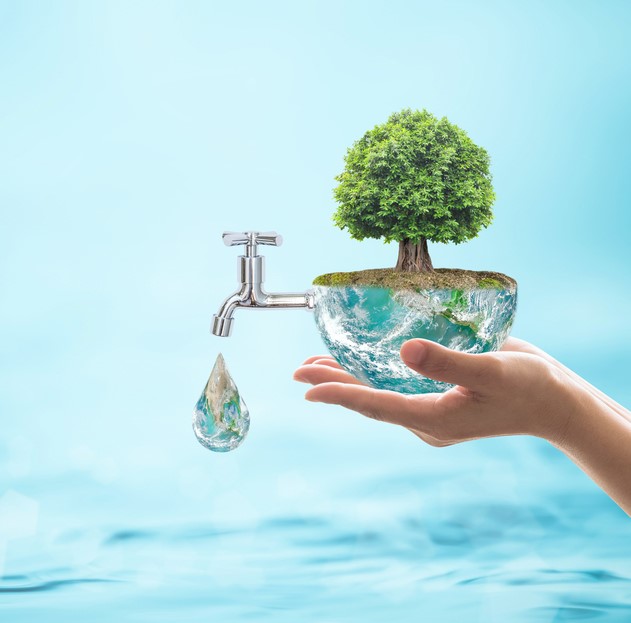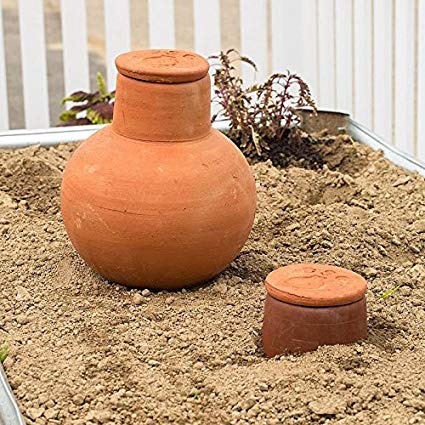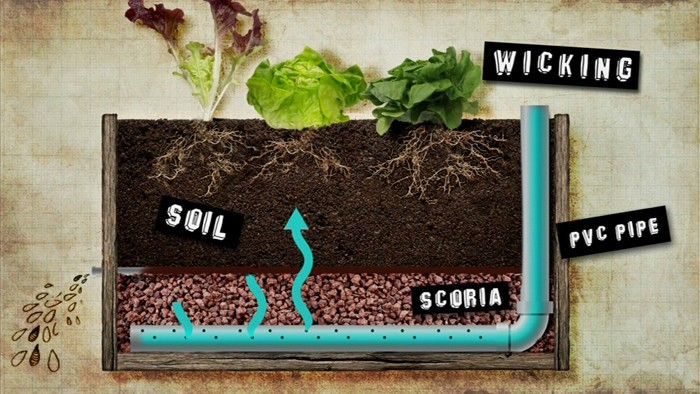

Friday, September 20th student-led Climate Action Strikes were held across the world. I attended the strike in Albury (my second one) and again was incredibly impressed with the young people who were leading the protest. They were articulate and informed and if they are the future leaders of the world, bring on the future.
Social Media this week has been focussing on climate change – in my feed at least. The United Nations Climate Action Summit was held in New York this week and was addressed by Greta Thunberg the incredible young climate activist. Some posts that have been repeatedly shared on Social Media this week have focussed on the fact that young people are being educated in air-conditioned classrooms, using computers for much of their learning, as well as their use of mobile phones. Somehow the fact that most classrooms have air conditioning has been attributed to the students themselves. I am yet to see a student who has managed to get a school airconditioned but if that student does exist then they must be an amazing kid! These arguments seem to miss the point that the use of technology is not in question it is the source of the power charging them that needs to be changed.
Not everyone believes that climate change is real or that we need to make changes to address it. Scott Morrison doesn’t seem to believe that Australia needs to do any more than is already being done. At a national and global level, the majority of us have absolutely no influence so what can we do?
There are any number of changes we can make in our own daily behaviour that will have an impact. Any change no matter how small must be good. If each and every one of us were able to make just a small change imagine the impact overall. I know I can’t change the government’s policies, make Trump believe climate change is real or even alter the opinion of friends whose thoughts don’t align with mine but, there are many things I can do. So, what are these things?
Throw away fashion contributes greatly to both climate change in the production phase and to the masses of waste we produce. Buying less clothes or shopping at Op shops is something that we can do. I tend to buy fewer but better-quality clothes that will last longer. I have no issue with being seen in the same few outfits day in and day out. Being clean and decently covered is what matters to me. Once my clothes are no longer appropriate for work or social occasions, they become house clothes with the next step down being garden clothes. When they are too holey for even garden wear they become dusters and rags. It generally takes about six years for a piece of clothing to go from new to rag bag in my case. Generations before us were used to living in this way, mending and darning their clothing and passing clothes down to younger siblings and cousins. The advent of cheap clothing has dramatically changed the way we live. Beautiful patchwork quilts were made from scraps of fabric that still had wear in them, nobody purchased fabric specifically to cut up into small pieces and then sew together again. My child has two pairs of shoes and a pair of thongs at any given time, one pair of runners and one pair of good shoes (usually school shoes). Again, I spend money on good quality shoes that will be grown out of rather than worn out. If the shoes have wear left in them which is not often the case with small boys, they are donated to the op-shop. If they are worn-out, they become garden planters for succulents or shoes for scarecrows. I will gladly accept used clothing from friends and if it can’t be used in our household I will happily pass it along to someone else who can use it.
Ensuring your electrical appliances are energy efficient will save you money as well as reducing your power needs. Turning off appliances when they are not in use and turning off lights and heating in rooms that are not occupied will have the same effect.
Australia should be a sea of solar panels with panels on every roof given our climate and the sunlight we could be harnessing. Solar panels have reduced dramatically in price over the last ten years. Subsidies exist in most states to assist with the initial cost of purchasing panels and ultimately the household power costs will reduce significantly. We have had solar hot water for approximately 15 years and solar panels for 10. If we were to move to a new house my first priority would be installing solar power.
Heating and cooling are things that most of us would not consider going without. There are many ways we can reduce the need for heating in particular. Wearing an additional layer of clothes, having rugs to snuggle under on the couch, using draft excluders for doors and windows are all ways to reduce the heat demands in a house. Thermally efficient house design and double-glazed windows are things to consider if you happen to be building a new house. In older houses much can still be done, ensuring you have good insulation, installing blinds and curtains and checking that your heating system is working correctly and efficiently will all help. Older houses can be retrofitted to ensure your systems are working to capacity, it takes time and commitment, but it is achievable. Going without air conditioning in the types of summers we experience is not something that I would consider but I will make sure that I minimise our needs by ensuring curtains are closed during the day to minimise heat build-up, windows are opened in the cooler times of the day for the same reason.
When replacing household appliances pay attention to the energy ratings that will be displayed on them. Buy the most energy-efficient appliance you can afford, and you reduce your power costs and save money in the long run.
Every one of us is responsible for handing our children and future generations a world that is not about to implode. I cannot recall where I heard it, but one statement I heard that really resonated with me was that we are not going to destroy the earth, instead we are destroying ourselves. The earth will heal once Humans are no longer polluting and destroying it. I would like to attribute that to someone, but do not recall who said it so apologies if it was you. We all need to step up and stop destroying the only planet we have.

I know it is only September, but Christmas is creeping up on us very quickly. Personally, I don’t understand how people get caught unprepared for Christmas, after all, let’s face it, it happens on the same date every year! One of the ways of making sure your Christmas is relaxed and fabulous is to be prepared so that there isn’t a horrible rush at the last minute.
Christmas is one of those times when we can create a mess, financial mess, literal mess, hot raving mess!
Financially the way to keep it under control is to minimise your spending by purchasing throughout the year particularly when items are on sale. Spending only what you can genuinely afford without putting yourself in hardship sounds like common sense, but millions of people put themselves into debt every Christmas. Don’t get carried away by the season spend wisely.
Having a little person in our household we still do the whole Santa thing, but we keep it very simple. Santa brings four presents, something you want, something you need, something to wear and something to read. I try very hard not to let anything that goes into a Santa sack be made from plastic unless it is Lego which I know will be used over and over for many years.
One area of Christmas that we can make a huge difference is how we wrap our gifts. Mountains of wrapping paper finds its way into landfill every Christmas and it is totally unnecessary. When I was a child (and I know I was not alone in this) my mother would recycle every piece of wrapping paper that came into our house. We were not allowed to rip open any presents, each one had to be very carefully opened to preserve the paper which had the sticky tape carefully removed and was then folded and put into a special box from which it was retrieved to wrap any outgoing gifts. Paper that was creased was ironed before it was reused and if an edge was torn it was carefully trimmed so it looked neat. It wasn’t about being environmentally friendly it was about frugality, an art we seem to have lost.
The gifts given from our family are all encased in handmade fabric bags that can be used multiple times. They can be washed and ironed and will look great for many years. I have a range of bags in Christmas prints, but I also use a variety of different fabrics for birthdays throughout the year and usually try to match the fabric to the interests of the recipient or to the gift it contains. The wrapping can become part of the gift, a storage bag for toys, a book bag or wrapping for another gift.
When my older children were little, we spent a fun afternoon with some butcher’s paper that I had been given and some red and green paint. I painted the kid’s feet and had them run along the paper, they then added handprints. Once the paint dried the paper was used to wrap the Christmas gifts for that year. We had a lot of fun and spent no money at all on our wrapping. Wrapping paper can be recycled or composted but you do need to remove the sticky tape first. An alternative to sticky tape is to use string or ribbon to tie up your presents.
A couple of years ago we started a new family tradition with a fun game we play rolling dice and opening and swapping presents according to the numbers rolled. I was concerned that the gifts used in the game would be junky plastic so we put rules around what could be given. Any item used had to be either purchased from an op shop, handmade or regifted. I ended up with a fabulous pair of salt and pepper grinders that were a regift but the most popular present and the one that a number of people wanted was an “Instant Golf Champion” pack. Purchased from an op shop for less than $5.00 it contained a golf club, trophy and a polo shirt embroidered with a golf club logo. The preparation for the game has become almost epic with family outings to op shops and plenty of discussion and much laughter.
Keeping gifts practical, useful, meaningful and things that are actually wanted will reduce some of the wastage that occurs with Christmas. If someone says that what they really want is a load of compost get them a load of compost. 1 dozen bags of Horse manure? -maybe don’t put it under the tree. Lamborghini – possibly not! You don’t have to spend a lot of money to make your gift meaningful.
Food is another area of massive waste at Christmas. With dogs, chooks, worms and compost there is very little food waste in this household, and we have worked hard to minimise our grocery costs which has flowed through to less food waste. Storing food correctly will decrease spoilage. Don’t over cater, buy enough for your needs but don’t overdo it. Ham is the perfect example of food that can be easily wasted. Don’t buy the biggest ham you can find, get one that will meet your needs. If you can’t bear the sight of another piece of ham slice or dice and freeze your leftovers for later use. Freeze the bone for Pea and Ham soup when the weather cools off.
Relax, prepare early, spend wisely and enjoy the season that is coming up rapidly.

Water is such a precious resource and one that we need to use very wisely. The ability to maintain a garden over an Australian summer can depend on your creative and clever watering techniques. In many places, water restrictions are very familiar and happen most summers. In some towns in New South Wales, it is predicted that water will run out by the end of this year. Perhaps we have splashed that precious resource around too freely in the past and we have certainly developed seriously bad habit’s in terms of water wastage.
Of course, there are things that we all should be doing as a simple matter of course. These are practices that should be second nature such as only watering in the early morning or evening, watering at ground level only, never leaving the tap running while you are cleaning your teeth and washing full loads of laundry only.
Installing rainwater tanks for garden watering is an excellent idea where at all possible. In the early 1990’s when we were building our first house and wanted to install rainwater tanks, we were not able to as it was against the bylaws at that time, can you believe that it was not legal to install a tank? I have also heard of towns where when piped water was connected, they were made to remove their rainwater tanks. Now we have tanks that will usually see us through the summer with wise watering practices.
Improving your soil by adding organic matter increases the water retaining ability of the soil which gives you an instant head start. Watering your seedlings less frequently encourages the plants to develop longer and stronger roots which decreases their dependence on supplementary watering. Mulching around your plants will help prevent your soil from drying out.
Put a bucket under your shower to catch your “warm-up” water and use that to water pot plants or garden beds close to your house. With only one person showering it is easy to gather several litres each day, with each additional person in the household will add several more litres of water available to water your garden. Keep a bucket in your kitchen and collect any left-over water from glasses and drink bottles, the water you use to cook vegetables etc and use for your gardens. Wash vegetables in a bowl rather than pouring water down the sink and use that water in the garden as well.
Dig a hole next to where you are going to plant more water-dependent plants such as tomato, zucchini, cucumber, etc. and bury a 2-litre plastic soft drink bottle up to the neck. Prior to burying the bottle use a pin and put multiple tiny holes around the bottom third of the bottle. Use a hose or a watering can and a funnel to fill the bottle as required. This will ensure that the soil around the roots of the plant remains damp. You can add liquid fertilizer to the bottle when desired to deliver a dose of goodness right where it works best.

Ollas are unglazed terracotta pots designed specifically to be buried in the garden to keep the soil damp by water slowly leaking out. It is very difficult to purchase Ollas in Australia but if you have a potter as a friend, have access to a potter or are a potter, you are set. I tried a makeshift version one year with terracotta flowerpots with the drainage hole sealed with silicone and an old plate on top to reduce evaporation. It didn’t work out overly well and I found the plastic drink bottle worked much better. I have read of people who use traditional Ollas in the correct shape and have much better success with them. I am on the hunt for a potter who can make some for me -my skills with the clay would lead to horrendously wonky pots. Close monitoring of water levels is essential with either Ollas or bottles as complacency may lead to your garden drying out.

Wicking beds were developed in Africa as a response to the need to produce food in dessert conditions. The principle is the same as self-watering flowerpots with the plants accessing the water from a water reservoir via a wicking process.
A raised bed is required and can be built from any medium, I know people who have made wicking bed from old refrigerators, others from pallets and some from beautiful timbers. The outside doesn’t really count it is the inside that matters. The container needs to be sealed in the bottom third, builder’s plastic is good for this task. If using an old fridge, you won’t need to use plastic and if using something like a bathtub you will need to seal the plug hole. Place a piece of pipe with holes drilled into it along the bottom of the container with an upright piece of pipe joined to it and with the opening just above the soil surface. Fill the bottom third of the container with gravel or scoria, being careful to not pierce the plastic. Cover the top of the gravel with a piece of shade cloth or similar fabric to prevent the soil from infiltrating the reservoir area. Drill a hole in the bed just at the level where the gravel or scoria ends, this allows any additional water to escape and ensures that the bed will not flood. Fill the container with good soil of compost. Plant your seeds or seedlings and water in gently. If you are using seeds you will need to water gently from the top until the seeds germinate and reach the level of having their true leaves. Mulch the surface of the bed to reduce evaporation.
Once the plants are established you should only need to water the plants through the hosepipe. Fill the reservoir until water starts to run out the drain. The amount of water you need will depend on the dimensions of the wicking bed and the time between refills will depend on temperature and the type of plants, you will work out the requirements as you go.
I have made wicking beds successfully form polystyrene broccoli boxes with very good success. This method is great for growing leafy vegetables such as spinach and lettuce. Remember that you will always need to replenish the soil and fertilise regularly with this type of garden bed.
If you only manage to implement a couple of changes you are making a difference and saving water. Imagine if we all managed to change our practices, how green would our gardens be?